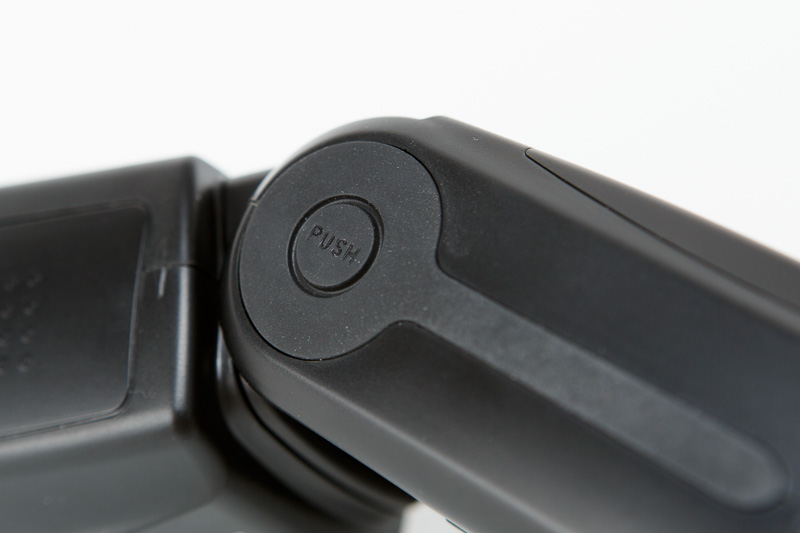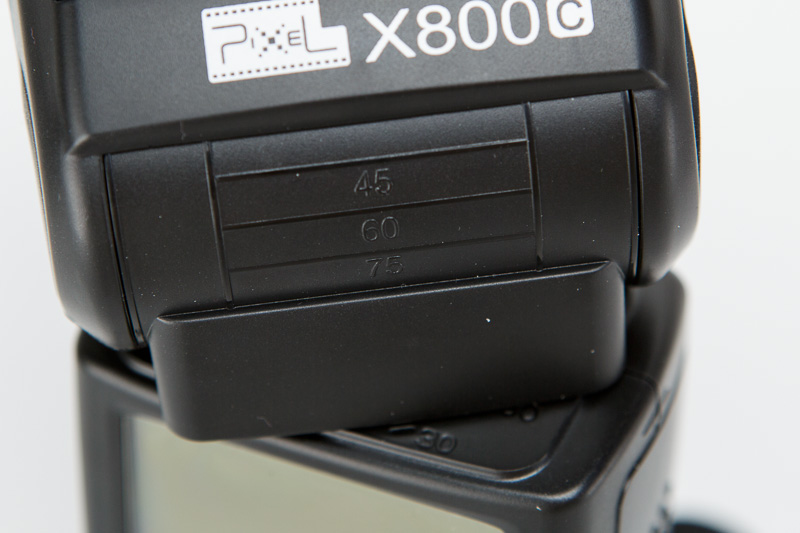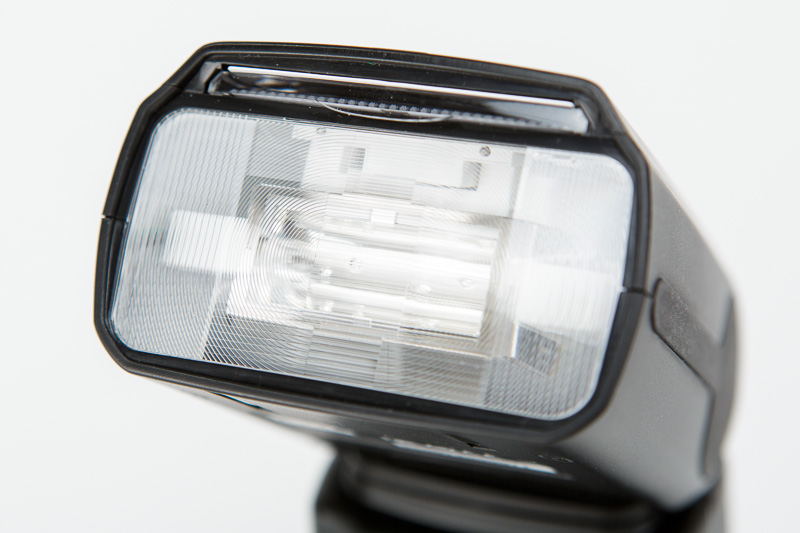
Pixel HK have sent us two preproduction models of their new X800c flash units for testing. While it is very similar to their Mago flash we tested earlier, it has an added feature, being the ability to provide E-TTL II through radio. We’ve run some preliminary tests to see how it holds up to Canon’s own 600EX-RT, which it closely resembles in quite a few ways.
What it is
It’s a flash gun for the Canon E-TTL II system. It’s compatible with Canons optical protocol, and additionally provides a proprietary radio protocol. Its price is currently unknown. Some specs (courtesy of Pixel HK):

In the box
In the box you’ll find:
- The X800c
- a Pixel SF-18 flash stand
- a carrying pouch
- a flash diffuser (omni bounce)
- a manual (not included with our preproduction model)

Design, Specifications & Features
The design of the X800c was clearly… inspired, by the 600EX-RT. The hot shoe, the battery compartment and the swivel head all look virtually identical to the same parts on the 600EX-RT. The fit and finish aren’t quite as good (as is to be expected), but it feels good and handles well. It’s slightly smaller overall than the 600EX-RT (which is good). The user interface is based on that of the Mago (which we quite liked).
Some notes on the specifications and features:
- GN: judging by a side-by-side comparison of shots taken at full output, the X800c indeed appears to be about as powerful as a 600EX-RT, which also has a GN of 60 @200mm.
- Zoom: The zoom range from 20-200mm is quite useful and on-par with the 600EX. Auto zoom works correctly and we like the fact that usage of the wide panel is detected and displayed on the LCD.
- Flash angle: the head has the same range of motion as the 600EX’s, including macro (a few degrees down). It locks securely enough in each ‘click’ to take the weight of light modifiers.
- Recycle time: recycle times (w/ Eneloop batteries) at full and half power are slightly slower than the 600EX — there’s less than half a second between them.
- LCD display: the X800c uses a graphic (dot matrix) LCD screen that is about on par with the 600EX’s. The screen on the X800c has about the same resolution, is brighter, and has a slightly smaller viewing angle than the screen on the 600EX. Contrast is very good, although the screen is a bit more reflective than the 600EX’s. (More on the user interface later.)
- Batteries: the X800c uses 4 AA’s, like most flash units. The design and construction of the battery door appear to be (loosely) based on the 600EX, which certainly isn’t a bad thing. The door feels very sturdy and locks securely, although it lacks the 600EX’s rubber seal. The batteries are staggered, allowing the body of the unit to be slimmer than the 600EX’s.
- Hot shoe: the metal hot shoe is heavily inspired by the 600EX, sporting the same rubber weather seal and locking mechanism. Locking is smooth and secure, although the flash has (quite a bit) more play in the hot shoe than the Canon.
- Flash diffuser and bounce card: the diffuser panel does a good job at spreading the light evenly. The bounce card however doesn’t always come out with the diffuser on one of our test units.
- USB port: where the 600EX has its mounting thread socket, the X800c has a mini USB port that allows for firmware updates. No updates are available yet, so we haven’t been able to test this.
- Other interfaces: the layout of the PC-sync port and other connectors should look very familiar to Canon users. The battery pack connector however is not the standard Canon one (it has an extra notch) which may be very inconvenient.As said, Pixel have omitted the Canon-specific mounting thread.
- Size: while the Mago was a bit larger than the 600EX (especially its flash head) the X800c is slightly smaller. This makes it noticeably larger than the 580EXII. It weighs about 20g less than the 600EX-RT.
- Ready beep: like the Mago and the 600EX, the X800c features a “ready beep”, an audible signal telling you that the flash is charged and ready to fire again after an exposure. This is a very handy feature, especially when using the unit as a wireless slave. On the Mago, we found the the ready beep as confirmation for key presses and dial turns too loud and obtrusive. Thankfully, this has been improved on the X800c and now works very well.
Build Quality, Fit & Finish
Overall build quality is excellent for a unit in this price range, easily on par with the Mago. You can really see thought has gone into its design and usability. Unfortunately, the rotary dial shows the same behaviour as on the Mago, although to a lesser extent: it misses turns sometimes, especially when turned quickly. This makes it difficult to make adjustments quickly and confidently — you always have to check whether the adjustments you wanted to make were actually made. Of course when you use the X800c in a “set and forget” kind of way, or only make adjustments through the camera menu, the problem isn’t that big. But if you use it as a wireless master, it’s annoying at the least.
User Interface and Ease of Use

The user interface is derived from the one on the Mago, which we were very enthusiastic about (see our review of the Mago). Most settings are easily reachable on the screen, without having to browse through multiple settings pages like on the 600EX. The only ‘complaint’ here, is that it can sometimes be confusing whether a short or long key press of the leftmost and rightmost option buttons is required to enter their assigned option menus along the left and right sides of the screen. A short press on the rightmost button toggles HSS, while a short press on the leftmost button enters the option menu (a long press toggles wireless modes). This could be easily improved with a firmware update.
Flash consistency: wireless E-TTL II
We’ve done some tests to investigate the consistency of exposure when using wireless TTL with the X800c. For this, we’ve paired two preproduction models of the X800c with the Canon 580EXII and the Canon 600EX-RT, each acting as wireless master and slave in turn. The Canons used optical TTL, the Pixels both optical and radio TTL. Tests were performed in a studio environment, where the master flash was connected to a Canon 5D mark III with an EF24-70mm f/2.8L USM, mounted on a tripod. Camera settings were 1/160s at f/5,6, ISO 100, 70mm (manual focus), while TTL exposure (E-TTL II, Evaluative) was ranged from -3EV to +3EV in 1EV steps, for each master/slave combination. Each flash was allowed to recycle fully between shots. Images were imported into Lightroom 4.4, exported as JPG without any processing (apart from slight contrast and saturation adjustments).

Taking the histograms of the 580EXII/600EX-RT combinations as a baseline, the combination of both X800cs underexposes slightly, while the X800c/600EX-RT combination (and vice versa) overexposes slightly. Variations in exposure are also slightly larger with the X800c than with the Canon units, although this isn’t readily apparent from the image above.
In the quantitative test above as in other qualitative tests we’ve done, the exposure difference seems to be consistent. Therefore, when using the X800c on its own as a TTL flash (both on- and off-camera), this exposure difference can easily be fixed by dialing in some flash exposure compensation (FEC).
Compared to both Canon flashes, the X800c exhibits a noticeably magenta colour temperature. When using the X800c by itself, this is no issue (as the colour temperature appears to be consistent), but when using it along with Canon units, this can result in unwanted colour casts.
Overall TTL performance is good, although there is room for improvement. Pixel say they are working on this, assisted by findings of ourselves and other testers.
AF assist light
The X800c’s AF assist light pattern doesn’t seem to be the most useful one we’ve seen in a flash unit. Although it contains both horizontal and vertical lines, there’s quite a lot of ‘darkness’ in between. This means that the light pattern didn’t align to many focus points on the 5D mark III (and mark II) that we used during testing. Hopefully the final product will provide a more useful pattern.

Summary
All in all, the X800c is a very promising product that appears to be well-designed and well-engineered. Wireless TTL via radio is arguably becoming a must-have feature for speedlights, and the X800c appears to be performing well in this regard. There are still some issues with correct exposure that need to be sorted out — some other testers are reporting bigger exposure differences (both consistent and shot-to-shot) than we have experienced — but Pixel say these will be solved when the final product comes out. The important parts of the hardware (flash bulb, LCD screen, control buttons) appear to be in order and most of our findings should be fixable with firmware updates (apart from the bounce card and AF assist light pattern).
In general however, one does wonder how useful a proprietary radio system as used on the X800c will be in the long run. The X800c’s radio protocol isn’t compatible with the one used by the Canon 600EX-RT (and the Canon ST-E3-RT), nor with protocols of other third-party manufacturers (as far as we know). This means that you’ll either have to go “all Pixel” to use TTL via radio, or stick to optical TTL. Of course the same goes for any other proprietary system (e.g. YongNuo, Phottix, Shanny).
That being said, if you’re not ‘burdened’ with owning any Canon RF (or other) flashes, the X800c will very likely be worth considering, as it looks to be a solid performer. Whether it’s your best option will partly depend on its retail price.

(Preview based on preproduction models with serial# 350072000076 and ..71, firmware version F1S 001.)












interested in the price of this flash please
thanks
kirit
Kirit, prices on eBay start at around $160